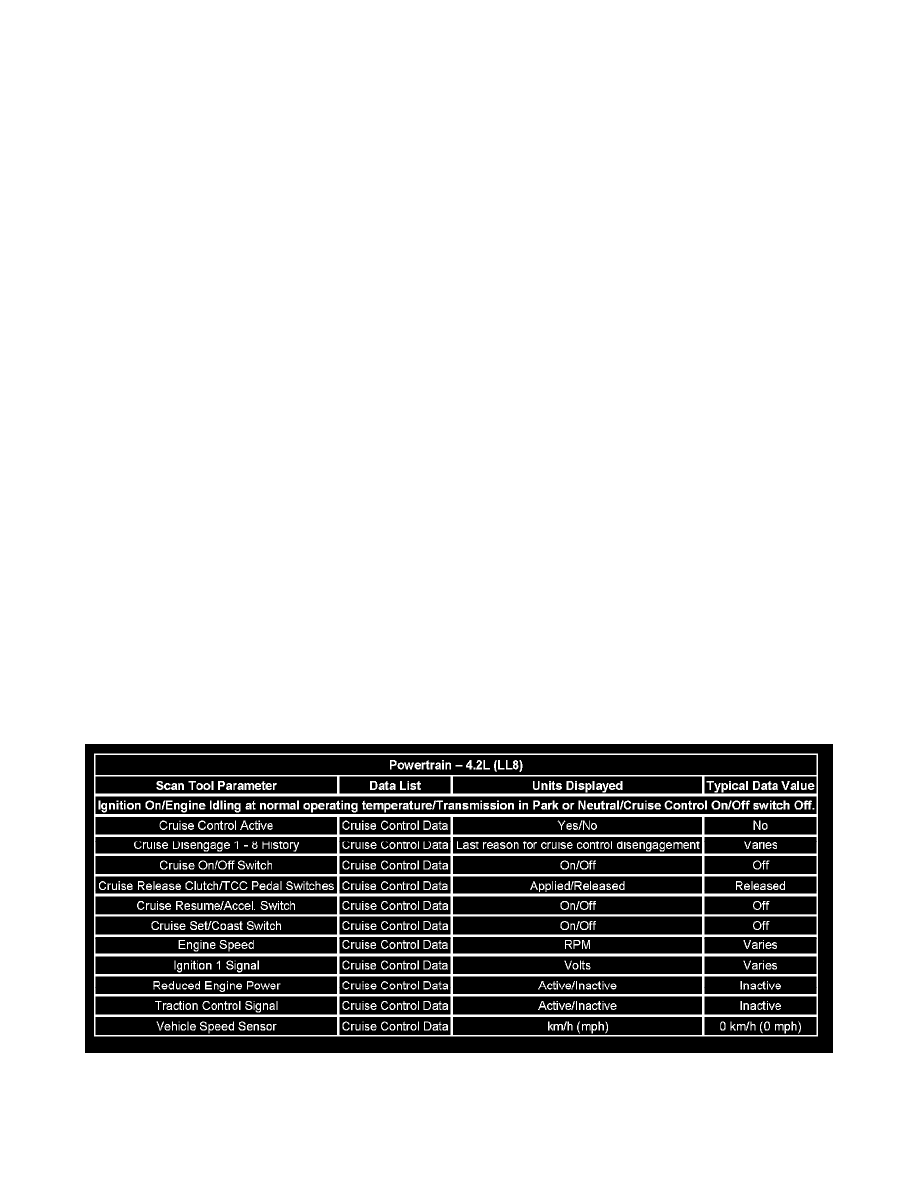Rainier 2WD L6-4.2L VIN S (2005)

Over Set Speed: This parameter is displayed when the current vehicle speed is greater than the set vehicle speed by more than a calibrated amount.
Over Speed: This parameter is displayed when the current vehicle speed is greater than the set vehicle speed by more than a calibrated amount.
Over Speed Tap: This parameter is displayed when the Set/Coast switch is briefly applied while the current vehicle speed is greater than the set vehicle
speed by more than a calibrated amount.
Pedal Initialize: The PCM/ECM detects that a stop lamp pedal activation had not occurred before the cruise control system was requested.
PCM Error: The PCM/ECM detects that a cruise control software execution error is present.
PCM Inhibit: The PCM/ECM detects a RAM corruption associated to the cruise control system.
Pedal > Cruise: The PCM/ECM detects that the accelerator pedal overrides the set vehicle speed for approximately 60 seconds.
Serial Data: A fault in the serial data circuit from the cruise control switch to the platform module is detected.
S/C On, CC Off: When the PCM/ECM detects that the cruise set/coast signal is active and the throttle blade fully closes the cruise control system will
disengage until the PCM/ECM detects that the set/coast signal is inactive. The cruise control system will then engage and set with the new vehicle speed.
S/C On - Speed High: This parameter is displayed when the Set/Coast switch is briefly applied while the current vehicle speed is greater than the set
vehicle speed by more than a calibrated amount.
Stop Lamp Switch: The PCM/ECM detects that the stop lamps have been activated.
TAC Inhibit: The PCM/ECM detects a fault within the TAC system.
Traction: The PCM/ECM detects that the traction control system had been activated. It is also possible that a tire with low air pressure can also set this
disengagement reason.
Traction Loss: The PCM/ECM detects that the traction control system had been activated. It is also possible that a tire with low air pressure can also
set this disengagement reason.
Two Commands: The PCM/ECM detects that the Set/Coast switch and the Resume/Accel switch are active at the same time.
Two CC Commands: The PCM/ECM detects that the Set/Coast switch and the Resume/Accel switch are active at the same time.
Under Speed: The PCM/ECM detects that the vehicle speed is less than the cruise memory speed by more than a calibrated amount.
Under Set Speed: The PCM/ECM detects that the vehicle speed is less than the cruise memory speed by more than a calibrated amount.
Powertrain
